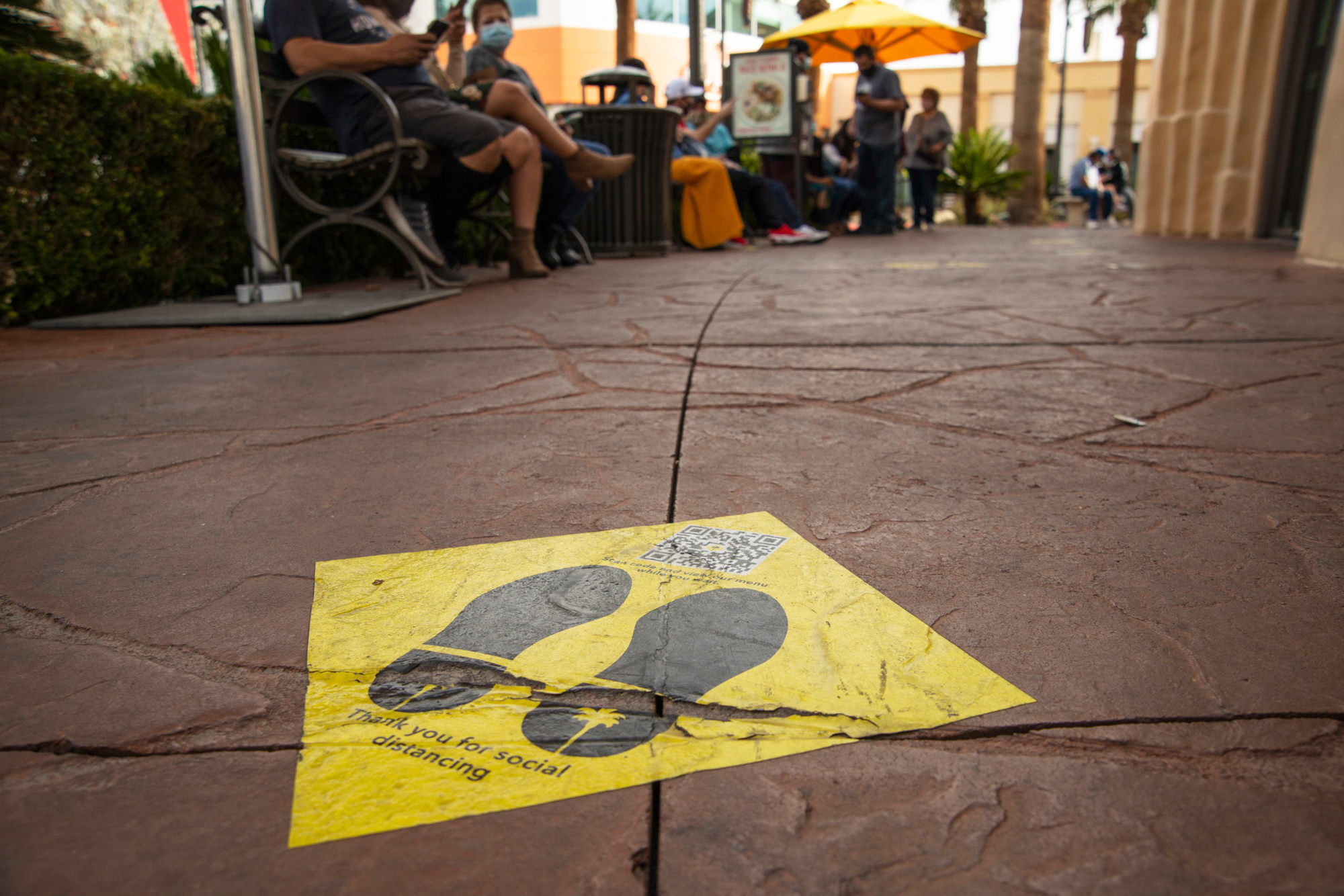In stark new report, state officials put numbers on the pandemic’s damage on Nevada

The pandemic cost Nevadans nearly 4 million months of employment, boosted consumer spending by billions of dollars and coincided with a doubling in the rate of substance use-related deaths, according to a lengthy new COVID-19 Impact Report recently released by The Nevada Department of Health and Human Services Office of Analytics.
Most of the health-related data in the report was generated to support Nevada's COVID-19 Mitigation and Management Task Force, but was later revised to include a wider array of data in order to “determine the longer-term impacts of decisions made in the height of the pandemic, and the impact of those decisions on more comprehensive quality of life indicators.”
According to Shannon Litz, the deputy director of programs at the Nevada Department of Health and Human Services, the pandemic increased collaboration among governments and community partners. New systems were developed to address public and state leadership inquiries. Data also became more transparent.
Here are some of the highlights from the analysis:
3: Where COVID-19 ranks on the list of leading causes of death in Nevada. The illness was responsible for 11 percent of deaths in 2020, 16 percent of deaths in 2021 and 7 percent of deaths in 2022. In 2020, heart disease and cancer were the top two leading causes of death in the state.
94,692: How many years of life are estimated to have been lost to COVID-19 in Nevada as of December 2022.
425 percent: The increase of the use of telehealth services in March of 2020. Following the pandemic, high demand has been reported for telehealth treatments related to major depressive disorder, anxiety, hypertension, opioid abuse and alcoholism.
41 percent: The increase in Medicaid enrollment between March 2020 and December 2022 after the federal government implemented a pause on Medicaid redeterminations in 2020. During the pandemic, peak Medicaid enrollment was at 937,000.
Redetermination is the process of determining whether beneficiaries are still eligible for the program; it often leads to people losing coverage because their income has risen above qualifying levels.
$3.6 billion: The amount spent on health care claims for Nevadans on Medicaid in 2022 alone.
31 percent: The percentage of the more than 1 in 4 Nevadans who relied on Medicaid for their health care coverage that was used monthly in 2021.
33: The number of states that provided SNAP emergency allotments during the pandemic, Nevada included. Starting in March 2020, SNAP participants received a second monthly payment, known as Supplemental Emergency Allotments.
Nevada saw significantly fewer families experiencing food insecurity because of the more generous benefits, according to the Household Pulse Survey.
386,981: The average number of recipients on SNAP between March 2020 and March 2023. They received a combined $1.3 billion to purchase food.
3.9 million: The number of months, between March 2020 and December 2022, that Nevadans lost in employment.
$15 billion: The amount, between March 2020 and December 2022, that Nevadans lost in wages.
20 percent: The percentage of adults who worked remotely in Nevada before the pandemic.
71 percent: The percentage of adults who were working that worked remotely in Nevada during COVID-19.
6: The number of points that Nevada reported fourth grade composite scores fell from 2019 through 2022.
K-12 students across the country take this test and the composite scores are calculated by averaging the results of the reading and math scores for each grade.
8: The number of places that Nevada’s eighth grade National Assessment of Educational Progress ranking rose from (44th to 36th).
$16 billion: The increase in spending from Nevada consumers on goods in 2022 from 2019’s levels. The national consumer spending on goods was the highest it had been since 2007.
$18 billion: The increase in spending from Nevada consumers on services in 2022 from 2019’s levels.
7th worst: Nevada’s ranking on home affordability in the fourth quarter of 2022.
30.4 percent: The percentage by which homelessness increased in the Northern Nevada Continuum of Care from 2020.
The Continuum of Care is a federal program that provides services to the community and aims to end homelessness.
6.9 percent: The percentage in which homelessness increased in the Southern Nevada Continuum of Care from 2020.
4.7 percent: The percentage in which homelessness increased in the Rural Nevada Continuum of Care from 2020.
36 percent: The percentage by which hate crimes in Nevada increased from 2019 to 2022.
4.3: The number of substance use-related deaths per 100,000 people in 2019.
9.0: The number of substance use-related deaths per 100,000 people in the third quarter of 2022.
18.2: The number of suicides in Nevada in 2020 per 100,000 people.
14th highest: Where Nevada’s suicide rate stood in national rankings in 2020. This is the lowest ranking in Nevada since 2015.
In 2015, 2017, 2019 and 2022 Nevada was ranked 11th.
15.3: The highest number of mental health-related deaths per 100,000 people in Nevada during the past six years. This number occurred in the fourth quarter of 2020 and then again in the first quarter of 2022.
This story was updated at 11:50 a.m. on 6/17/24 to correct the lost employment figure cited in the first paragraph.
